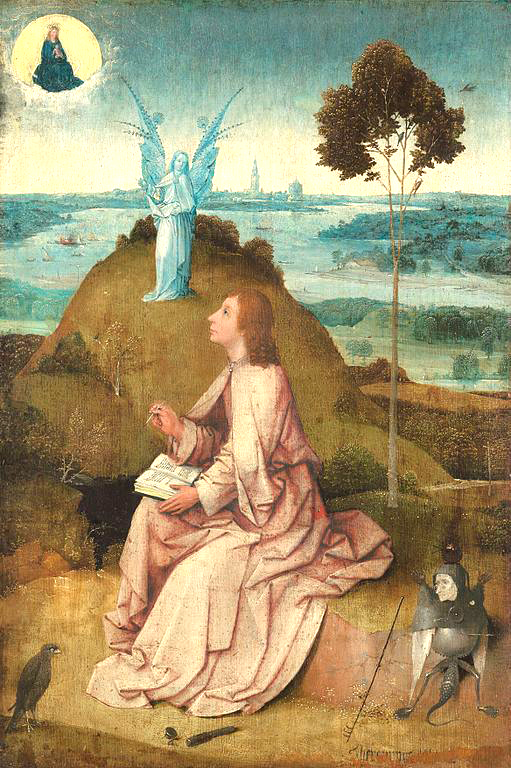Difference between revisions of "Template:POTD protected"
Occultwiki (talk | contribs) |
Occultwiki (talk | contribs) |
||
| Line 1: | Line 1: | ||
{| role="presentation" style="margin:0 3px 3px; width:100%; text-align:left; background-color:transparent; border-collapse: collapse; " | {| role="presentation" style="margin:0 3px 3px; width:100%; text-align:left; background-color:transparent; border-collapse: collapse; " | ||
|style="padding:0 0.9em 0 0;" | [[File: | |style="padding:0 0.9em 0 0;" | [[File:Saint John on Patmos.jpg|300px|thumb|]] | ||
|style="padding:0 6px 0 0"| | |style="padding:0 6px 0 0"| | ||
The '''[[Book of Revelation]]''' is the final book of the New Testament (and consequently the final book of the [[Bible]]). Its title is derived from the first word of the Koine Greek text: ''apokalypsis'', meaning "unveiling" or "revelation". The Book of Revelation is the only apocalyptic book in the New Testament canon. It occupies a central place in [[Christianity|Christian]] eschatology. | |||
Much of Revelation employs ancient sources, primarily but not exclusively from the Old Testament. The book is commonly dated to about AD 95, as suggested by clues in the visions pointing to the reign of the emperor Domitian. The "beast with seven heads" and the number [[666]] seem to allude directly to the emperor Nero (reigned AD 54–68), but this does not require that Revelation was written in the 60s, as there was a widespread belief in later decades that Nero would return. | |||
<p><small> | |||
<p><small>Artist: [[Hieronymus Bosch]]</small></p> | |||
[[:Category:Images|'''(More Images)''']] | [[:Category:Images|'''(More Images)''']] | ||
<div class="potd-recent" style="text-align:right;"> | <div class="potd-recent" style="text-align:right;"> | ||
Revision as of 15:21, 17 July 2023
|
The Book of Revelation is the final book of the New Testament (and consequently the final book of the Bible). Its title is derived from the first word of the Koine Greek text: apokalypsis, meaning "unveiling" or "revelation". The Book of Revelation is the only apocalyptic book in the New Testament canon. It occupies a central place in Christian eschatology. Much of Revelation employs ancient sources, primarily but not exclusively from the Old Testament. The book is commonly dated to about AD 95, as suggested by clues in the visions pointing to the reign of the emperor Domitian. The "beast with seven heads" and the number 666 seem to allude directly to the emperor Nero (reigned AD 54–68), but this does not require that Revelation was written in the 60s, as there was a widespread belief in later decades that Nero would return.
Artist: Hieronymus Bosch |
